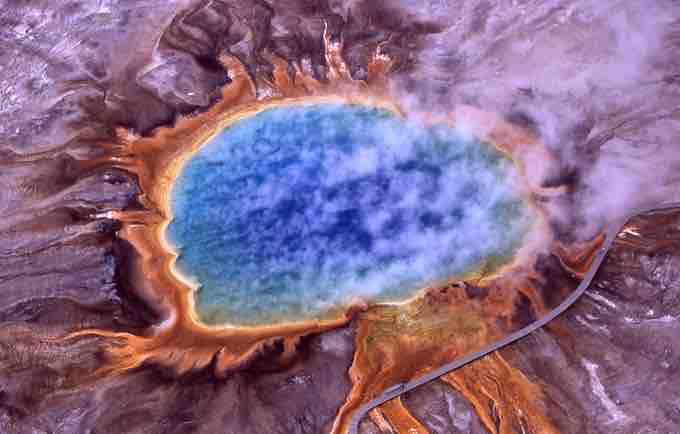A thermophile is an organism—a type of extremophile—that thrives at relatively high temperatures, between 45 and 122 °C (113 and 252 °F). Many thermophiles are archaea. Thermophilic eubacteria are suggested to have been among the earliest bacteria. Thermophiles are found in various geothermally heated regions of the Earth, such as the hot springs found in Yellowstone National Park .
Unlike other types of bacteria, thermophiles can survive at much hotter temperatures, whereas other bacteria would be damaged or killed if exposed to the same temperatures. As a prerequisite for their survival, thermophiles contain enzymes that can function at high temperatures. Some of these enzymes are used in molecular biology (for example, heat-stable DNA polymerases for PCR), and in washing agents. Thermophiles are classified into obligate and facultative thermophiles; obligate thermophiles (also called extreme thermophiles) require such high temperatures for growth, whereas facultative thermophiles (also called moderate thermophiles) can thrive at high temperatures, but also at lower temperatures (below 50°C).
Hyperthermophiles are particularly extreme thermophiles for which the optimal temperatures are above 80°C. Thermophiles, meaning "heat-loving," are organisms with an optimum growth temperature of 50°C or more, a maximum of up to 70°C or more, and a minimum of about 40°C, but these are only approximate. Some extreme thermophiles (hyperthermophiles) require a very high temperature (80°C to 105°C) for growth. Their membranes and proteins are unusually stable at these extremely high temperatures. Thus, many important biotechnological processes use thermophilic enzymes because of their ability to withstand intense heat.
Many of the hyperthermophiles Archea require elemental sulfur for growth. Some are anaerobes that use the sulfur instead of oxygen as an electron acceptor during cellular respiration. Some are lithotrophs that oxidize sulfur to sulfuric acid as an energy source, thus requiring the microorganism to be adapted to very low pH (i.e., it is an acidophile as well as thermophile). These organisms are inhabitants of hot, sulfur-rich environments usually associated with volcanism, such as hot springs, geysers, and fumaroles. In these places, especially in Yellowstone National Park, zonation of microorganisms according to their temperature optima occurs. Often, these organisms are colored due to the presence of photosynthetic pigments.

Microbial Mats Around the Grand Prismatic Spring
Thermophiles produce some of the bright colors of Grand Prismatic Spring, Yellowstone National Park